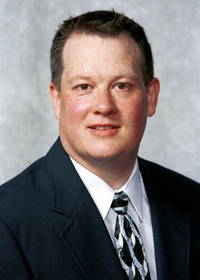Gardening for Beneficial Bees in Mississippi
As a result of the rise in pollinator health awareness, more people are wanting to help bees, but not necessarily keep them. If you fall into this category and you have a bit of a green thumb, you can help our honey-making friends and their native bee cousins by growing a pollinator garden that is rich in bee forage. Most home gardens contain at least a few species of plants that provide high-quality food for bees, but these gardens may lack the quantity, variety, or seasonal availability of blooming plants needed to draw large numbers and abundant species of bees to them. A good pollinator garden will cater to the foraging preferences and behavior of bees, rather than the aesthetic preference of the homeowner—although both needs can be simultaneously and beautifully met with thoughtful planning and an understanding of a few bee-ssential elements.
Flower Color Matters
Contrary to what many people think, honey bees cannot see colors in the red range very well and seldom forage on red flowers unless the flowers feature nectar guides. Nevertheless, their range of color perception is quite broad—nearly equivalent to a human’s—spanning from ultraviolet to yellow-orange. They are most attracted to white, blue, and violet flowers, which can be grouped together without interfering with an individual bee’s habit of visiting similar-looking flowers in a patch. This behavior is called “flower constancy,” and it is the honey bee’s way of maximizing foraging efficiency. Flower choice is primarily dependent on flower odor and color and secondarily on flower shape. The flower constancy behavior is most pronounced in honey bees but is also present in bumblebees. Solitary bees do not exhibit flower constancy, but they tend to forage on a narrower range of plant species.
Flower Shape Matters
The length of a bee’s tongue determines what sort of flowers it can forage on, and bee tongue lengths vary widely from one species to the next. Short-tongued bees (tongue less than 3 mm long), which include the primitive, near-hairless cellophane bees and the yellow-faced bees, are limited to flowers with shallow nectaries, like sunflowers, daisies, and plants in the carrot family. Honey bees fall into the mid-length tongue category (up to 8 mm) and can forage on a wide range of flower shapes and sizes (Figure 1). When they encounter nectaries that are too deep to reach, they are known to “nectar rob,” or access the nectary through a hole bored in the corolla or a space between petals. Bumblebees comprise the “long-tongued” group (9-20 mm), although there are a few short-tongued bumblebees as well. You can find bumblebees and carpenter bees sipping nectar from flowers with long, tubular corollas (e.g., penstemmon, certain salvias, and trumpet creeper) that seem to attract few other species of bees.

Plant in Large Groupings
Because of their “flower constancy” behavior, honey bees and other social bees usually forage within a patch of the same species of plant. Foraging honey bees learn to identify a productive food plant by the scent and shape of its flowers. The flowers are initially discovered by “scout bees,” which take foraging flights early in the day and share the general location of productive plants with their hive mates in a round or waggle dance. Each scout bee may find a different productive flower species, so nestmates attending a scout’s dance will learn only the flower that scout visited. Once a forager learns to target a particular flower species, it is very difficult for her to switch to another during the course of a day. For this reason, it is more beneficial to honey bees if you plant individual species of flowers in large groups or drifts. If this is not desired or feasible, plant small groups of the same species throughout the garden bed, spaced no more than a few yards apart, so bees can easily “hop” from one group to the next.
Plant for Successive Blooming
In a typical Mississippi year, honey bee brood-rearing lasts from February to late October; this is also when the heaviest foraging occurs. Flowering trees and shrubs provide the bulk of early-season forage, so consider incorporating a few into your landscape. Nectar and pollen flow declines during the hottest months of the year. Therefore, brood-rearing also slows during summer. Be prepared with heat-loving plants, such as basil, to provide forage during the dearth. Many summer flowering perennials will re-bloom for months if deadheaded or pruned. Autumn is a great time for native plants to take the stage, since many of the late-season Mississippi natives are excellent bee plants.
Provide a Source of Water
Although nectar contains up to 80 percent water, honey bees require a source of pure water to dissolve crystallized honey, dilute the food for their larvae, cool the hive, and, of course, hydrate themselves. There is actually a specific group of foragers within a honey bee colony that perform the duty of water collection for the hive, aptly called water foragers. Honey bees use a lot of water for evaporative cooling of their hive during the hot summer months, so it is imperative that a water source be readily available during drought periods. A running water feature—such as a fountain or drip hose—is preferable to stagnant bird baths, and also discourages mosquitoes from laying eggs in the water (Figure 2). Bees do not like to get their feet wet, so provide a dry surface for them to alight on (e.g., river rocks in the bottom of a fountain) if there is no convenient place for them to stand and drink.

Native Pollinator Housing
Native bees and wasps will readily inhabit man-made “bee hotels” and produce successive generations of pollinators for your garden (Figure 3). These hotels are fun and simple to make using scrap materials and natural resources. They can be virtually any shape or size, as long as the materials you are using resemble natural bee and wasp domiciles. Bees and wasps will nest in a variety of substrates, including wood blocks with holes drilled in them, bamboo straws, or mud-packed bricks. You can find instructions on how to prepare wooden native bee houses at www.pollinator.org. Placement of bee hotels is important; in general, they should be facing south or southeast, be at least 3 feet off the ground, and have a roof or cover that overhangs the openings.

Herbs
Most of the herbs commonly grown in Mississippi are good forage plants for honey bees, possibly because so many of them share the Mediterranean heritage of the Italian honey bee, Apis mellifera ligustica, which is the most abundant race of honey bee in North America (Figure 4). In general, culinary herbs prefer well-drained soils and full sun, while many medicinal herbs (e.g., St. John’s wort, lemon balm) can tolerate moist soil and part shade. A large percentage of the herbs featured in the MSU Clay Lyle Pollinator Garden are culinary herbs. A few honey bee favorites are rosemary, thyme, basil, and oregano. Rosemary (Rosmarinus officinalis) blooms in early spring through late fall in the Southeast, and both the upright and prostrate varieties provide abundant nectar to pollinators. Flower color varies from near-white to an intense bluish-purple. Honey produced from rosemary nectar carries the strong flavor of the plant’s leaves. Thyme (Thymus spp.) fares quite well in the heat of Mississippi summer and begins blooming in late spring. The tiny flowers are either pink or white and very dense, even on a small plant. Once established, thyme will grow quickly in a self-contained mound or in a creeping fashion, depending on the variety. Its low-profile growth habit makes it a wonderful filler plant. Expect some die-back during wet winters. There are many varieties of fragrant, culinary basil (Ocimum basilicum) that thrive in the hot months of late summer. These plants flower profusely when little else is blooming, sending up tall pink or white spikes that are irresistible to honey bees. This is a must-have plant for bee gardens in the South, but be aware that it is a self-seeding annual that will spread readily. Oregano and marjoram (Oregano vulgare; O. marjorana) begin blooming in late spring or early summer and will flower for months if you keep the plants fairly compact. When older plants begin to spread laterally, you may need to cut them back quite severely to keep them blooming.

|
Common Name |
Scientific Name |
Description |
|---|---|---|
|
Allium (onion, chives, garlic) |
Allium spp. |
Perennial. Both culinary and wild varieties are attractive to honey bees. |
|
Anise Hyssop |
Agastache foeniculum |
Perennial. Tall spikes add vertical interest and provide ample nectar to many species of bees. |
|
Basil |
Ocimum basilicum |
Self-seeding annual. Comes in many varieties that are easy to find in Mississippi nurseries. |
|
Comfrey |
Symphytum spp. |
Perennial. Related to Borage, but fares better in the South. Leaves are rich in nitrogen and potassium and can be used as fertilizer. Especially attractive to bumblebees. |
|
Lavender |
Lavandula spp. |
Perennial. Susceptible to root rot, but established plants can recover from excess moisture. Plant in well-draining mounds or containers. Look for varieties adapted to the South, such as L. x intermedia ‘Phenomenal’. |
|
Oregano |
Origanum vulgare |
Perennial. Like many members of the mint family, this herb is tenacious and will need frequent pruning. Pink or purple flowers shoot up on vertical spikes around early summer and are exceptionally attractive to honey bees (as are most of the mints). Foliage is either prostrate or mounding. |
|
Rosemary |
Rosmarinus officinalis |
Perennial. Small, woody shrub. Extremely low-maintenance and can tolerate a variety of soils. Blooms best in full sun. |
|
Sage |
Salvia officinalis |
Perennial. Evergreen with violet flowers in summer. Attracts a wide variety of pollinators. Needs well-drained soil and long dry periods between watering. |
|
Thyme |
Thymus vulgaris |
Perennial. There are many varieties of this culinary species. It is summer-blooming, has light pink flowers, and has a mounding growth habit. The dark pink flowers of creeping thyme (e.g., T. serpyllum) are also attractive to bees. |
Toxic Plants
Southern beekeepers wince at the mention of rhododendrons, azaleas, and Carolina jessamine planted for bee forage (Figure 5). While these plants do extremely well in Mississippi’s climate and do provide pollen and nectar, the nectar is quite toxic to honey bees. Other plants, such as angel’s trumpet (Brugmansia spp.), oleander, and bog rosemary (Andromeda spp.) are poisonous to honey bees and humans alike, and should definitely be excluded from the garden if you are keeping a hive for honey production. Honey made from toxic digitalis (foxglove) is quite safe for human consumption, and the plant is actually quite profitable to bees.

Native Plants
The term “native” refers to a plant that originated in the United States of America, but can also refer to regional natives (i.e., Southeast versus Northwest). There are two major advantages to planting regional native flowering plants: 1) they are well-adapted to your climate and soil type; and 2) native pollinators are perfectly adapted to them. As the popularity of native plants in home gardens has been on the increase, it is becoming much easier to find nursery-grown plants that are selected for more compact growth habits or longer-blooming, larger flowers. Check out www.mississippinativeplantsociety.org for information on locating native plant suppliers. Native plants make a very attractive garden when planted in dense groupings (Figure 6). Keep in mind that even nursery-grown native plants retain their high reproductivity and will spread quite readily in the garden.
Nonnative Plants
When you consider that honey bees have an Asiatic ancestry, it is no surprise that they are well-adapted to floral species from the subtropical regions of the eastern hemisphere. As the honey bee became naturalized in Europe, it coadapted with flowers in that region. Here in the U.S., there are several available garden plants and blooming shrubs originating in Europe or Asia that grow well in Mississippi and provide ample forage for honey and native bees alike. A few of the more common ones are listed in Table 2. With the exception of Elaeagnus, the nonnatives listed are not invasive and will not take over your garden or landscape. The silverberry bush and the winter honeysuckle are best used as a living fence or perimeter border. Although they both require regular pruning, the abundance of bee forage these sprawling hedges provide in early winter (not to mention the heavenly fragrance!) makes them valuable bee forage plants.

|
Common Name |
Scientific Name |
Description |
|---|---|---|
|
American Holly |
Ilex opaca |
Evergreen shrub/tree. Honey bees will cover the fragrant blossoms, which are excellent sources of pollen and nectar. Blooms in mid-spring. |
|
Anise Hyssop |
Agastache foeniculum |
Herbacious perennial. Spreads readily. Tall, bushy growth habit. Purplish spikes bloom in late summer, early fall. |
|
Aster |
Symphytotrichum spp. Aster spp. |
Perennial. Native asters tend to have white or purple flowers and are heavy fall bloomers. They are a major nectar source for honey bees in the fall. Mounding varieties, such as A. oblongifolius, are particularly attractive as garden plants. |
|
Blazingstar |
Liatris spp. |
Perennial. Tall pink or purple flower spikes are attractive to bees and butterflies. They add vertical interest to a garden and retain their color when cut and dried. |
|
Blue Mistflower |
Conoclinium coelestinum |
Perennial. This blue- to purple-flowering plant grows in tight clusters and prefers moist soil. In most parts of the state, it blooms in late summer and tolerates heat well, though leaves will droop and curl when too dry. Mistflower can also be grown in part shade, and it provides many butterflies, native bees, and honey bees with nectar. |
|
Coneflower, Orange Coneflower, Yellow Coneflower, Purple |
Rudbeckia fulgida Ratibida pinnata Echinacea purpurea |
Perennial. Many native bees and butterflies flock to these prairie flowers for nectar and pollen. They bloom in late summer and reseed readily. The seed heads, if left intact, attract backyard birds in winter. |
|
Coreopsis |
Coreopsis spp. |
Tender perennial. Hardy in North Mississippi and easy to propagate by seed. Native species and varieties are yellow. |
|
Gaura |
Gaura lindheimeri |
Perennial. Showy bloomer with sprawling habit. Native variety is white-flowering; cultivars are pink, white, or some combination. Also called “wandflower” or “whirling butterflies.” Attracts a wide variety of pollinators, including honey bees. |
|
Golden Alexander |
Zizia aurea |
Perennial. This member of the carrot family is a host plant for black swallowtail larvae. Many short-tongued native bees (think small, metallic species) are attracted to this pollen- and nectar-producing plant, in addition to honey bees. It is evergreen in the southern parts of Mississippi, and it blooms consistently during the growing season. |
|
Goldenrod |
Solidago spp. |
Perennial. There are several species of this plant that vary mostly in height. Goldenrod is a major source of nectar for honey bees in the fall. Goldenrod is often mistakenly blamed for seasonal allergies to ragweed. |
|
Ironweed |
Vernonia fasciculata |
Perennial. Tall plants with striking reddish-purple feathery flowers that attract many late-season pollinators. Foliage is sparse, so it pairs well with mounding plants. |
|
Oak Leaf Hydrangea |
Hydrangea quercifolia |
Deciduous shrub. Native to the southest U.S. and is an excellent provider of nectar and pollen. Blooms in mid- to late spring. |
|
Ohio Spiderwort |
Tradescantia ohiensis |
Perennial. Also known as “dayflower,” this plant blooms in the morning and provides food for many native bees in addition to honey bees. |
|
Virginia Bluebells |
Mertensia virginica |
Perennial. Does well in shade and part shade. Blooms in early spring. |
|
Wild Bergamot |
Monarda spp. |
Perennial. Can tolerate partial shade. Blooms during the heat of the summer in sprays of purple, pink, or white tubular flowers. The red-flowered M. didyma is prone to powdery mildew in Mississippi, but heavy pruning restores growth of healthy foliage. |
|
Yarrow |
Achillea millefolium |
Perennial. This feathery, fragrant carrot relative now comes in many colors, though the native is white. It blooms fairly early in Mississippi and is exceptionally hardy. |
|
Common Name |
Scientific Name |
Description |
|---|---|---|
|
Bluebeard |
Caryopteris |
Deciduous shrub. Heat tolerant to Zone 8. Covered with fragrant flowers in late summer that are highly attractive to bees. |
|
Lenten Rose |
Helleborus spp. |
Evergreen perennial. Good food source for bees in winter. |
|
Hosta |
Hosta spp. |
Honey bees access the nectary through holes bored by carpenter bees, similar to blueberries. |
|
Pincushion Flower |
Scabiosa japonica |
Perennial. Lace-like foliage forms small mounds that bloom profusely from late spring and into the fall. Flowers are lavender-blue and large, but stalks are fairly short and wiry. It is exceptionally hardy but does not like wet feet. |
|
Quince |
Chaenomeles japonica |
Deciduous shrub. Excellent bee plant. Blooms in late winter/early spring. Flower colors range from white to soft peach to dark pink. Fruits are edible. |
|
Russian Sage |
Perovskia atriplicifolia |
Perennial. Ever-blooming in Zones 8–9. Blue-purple flowers erupt from showy, long panicles of gray foliage. Carpenter, bumble, and honey bees are very attracted to this long-blooming shrub. |
|
Silverberry |
Elaeagnus spp. |
Evergreen shrub. Fragrant white blooms will be covered in honey bees in winter. Fruits of several species are edible. |
|
Snowflakes |
Leucojum vernum |
Perennial bulb. Late-winter/early-spring blooming shade plant. Similar to snowdrops, but more adapted to the South. |
|
Winter Honeysuckle |
Lonicera fragrantissima |
Deciduous shrub. Fragrant white flowers from January to March provide ample honey and bumblebee forage. Best used as a hedge. |
A Few Tips
- Some plants resemble good forage plants but produce nothing for honey bees. Forsythia is a good example. This early-blooming shrub can be confused with winter jasmine (Jasmine nudiflorum), which is a good provider of both pollen and nectar and blooms around the same time.
- If you must use pesticides or herbicides in your garden, look for products with low toxicity to bees; the label will contain this information. Apply in the evening after foragers have gone back to the hive. Natural predators of aphids and mealybugs, such as syrphid flies, lacewings, and lady beetles show up when the pest numbers get high, so consider letting them do the work of pest control.
- Several species of native bees will nest in dead twigs and hollow-stemmed plants in your garden, so hold off the garden cleanup until spring. Birds also appreciate the seed heads of plants like Echinacea and Liatris.
The information given here is for educational purposes only. References to commercial products, trade names, or suppliers are made with the understanding that no endorsement is implied and that no discrimination against other products or suppliers is intended.
Publication 2976 (POD-07-22)
By Audrey B. Sheridan, Extension/Research Associate III, Biochemistry, Molecular Biology, Entomology, and Plant Pathology. Original artwork by Audrey B. Sheridan.
The Mississippi State University Extension Service is working to ensure all web content is accessible to all users. If you need assistance accessing any of our content, please email the webteam or call 662-325-2262.









